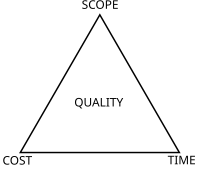
Photo from wikipedia
This paper analyzes the spatio-temporal variability of sunshine duration in the south of the Pampeana region as a first approach to solar climatic analysis, main input for the use of… Click to show full abstract
This paper analyzes the spatio-temporal variability of sunshine duration in the south of the Pampeana region as a first approach to solar climatic analysis, main input for the use of this resource. Hourly sunshine duration records from 1991 to 2015 in eight Argentine cities were analyzed using statistics and geospatial techniques. In addition, we analyzed the frequency of clear sky and overcast days in order to relate it to the sunshine duration variability. Sunshine duration in the Pampeana region presented a linear gradient increasing in an east-west direction. An inverse relationship between the mean sunshine duration and coefficients of variation was found in all the cities. The highest mean values of sunshine duration were recorded located between 62°W and 65°W, where the lowest variability was also registered. The city of Mar del Plata showed the lowest mean values of sunshine duration (4.5 h) and the highest percentage of variability (78.1%), whereas Río Colorado recorded the highest mean values of sunshine duration (7.5 h) and the lowest variability (51.1%) over the observation period. During the warm season, it was recorded a difference of 3.7 h in the mean SD values between the stations Río Colorado and Mar del Plata. The spatial distribution of the solar resource in the Pampena region is markedly affected by weather systems playing at the regional scale of South America. In the cold season, the west-east movement of the high pressure cells promotes the occurrence of Sudestadas, which explain the variability of sunshine duration over the coastal areas.
Journal Title: Environmental Processes
Year Published: 2018
Link to full text (if available)
Share on Social Media: Sign Up to like & get
recommendations!